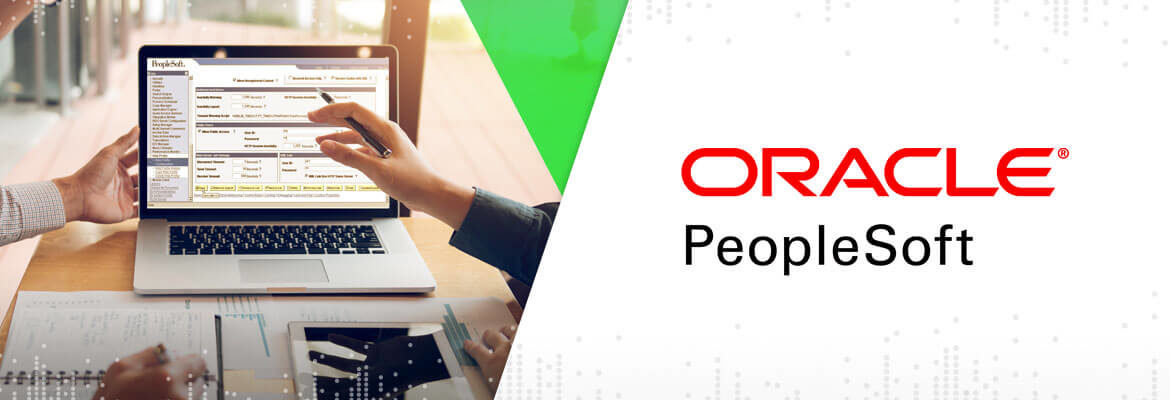Overcoming the Challenges in PeopleSoft Financial Reporting

PeopleSoft, part of the Oracle family since 2004, transacts and stores key data for various ERP functions, including finance. As in any organization, financial functions are the heartbeat of the company and having accurate financial information, at any time, is critical to decision-making.
But it’s not only about providing executive management with effective, flexible, and comparative reporting around income statements, balance sheets, and cash flow forecasts. Finance teams face several challenges when preparing analyses, investigating variances, running ad hoc inquiries, and responding to operational demands for insights—in addition to their long list of reporting tasks.
The Complexities of PeopleSoft ERP for Accounting
Oracle recommends a couple of different PeopleSoft reporting solutions for its finance users.
- BI Tools
Larger organizations may have standardized on a BI tool for reporting companywide. Oracle offers BI tools such as OBIEE and Hyperion for this. However, these tools are highly complicated to run and typically require the IT team to manage due to direct access to database tables and the required SQL expertise to write and run queries. In addition, BI tools were not created specifically for finance, so that much of the data retrieval, fine-tuning, and report creation ends up as customizations that the IT team has to continuously manage when tables or data structures change. - PS/nVision
PeopleSoft offers a free tool for reporting called PS/nVision. When finance managers want to analyze financial information and drive ad hoc inquiries, they need to be able to drill down into the data whenever a discrepancy is uncovered. They need to have real-time access to data for month-end, reconciliations, journal entries, and adjustments. PS/nVision can handle basic demands but trying to meet the day-to-day demands of most finance teams is difficult and slow.
The Limitations of PS/nVision for Finance Teams
PS/nVision requires that users be familiar with proprietary terms and concepts in PeopleSoft such as trees, nodes, and query sets. Tree data is used to limit the query result sets, but most finance users are not familiar with how tree data is organized. They depend on IT to set up the data connections, queries, and reporting templates.
If you look at the different responsibilities finance teams need to address, the complexities in managing financial reporting with PS/nVision quickly begin to stack up.
Searching for the right data
Finance teams need access to their PeopleSoft data throughout the accounting cycle. In addition to accounting data, they need access to data from multiple modules including purchasing, costs of materials, orders, suppliers, and more. In PeopleSoft, the back-end tables are complex and organized in a way that forces finance teams to depend on IT or power users to search for data they require.
Validating journal entries and adjustments
In their daily responsibilities to update and manage GL entries, finance teams must be able to validate that any journals they post—including adjusting entries—were posted correctly. Often this requires going beyond the GL to investigate one or more sub-ledgers. PS/nVision provides standardized reports for finance teams. However, PS/nVision does not provide a direct link from the GL to sub-ledgers. To access this sub-ledger data, finance depends on IT to create SQL statements, which can cause delays.
Reconciliations and resolving issues
PS/nVision provides querying on report data, but PeopleSoft warns users that they should be familiar with PeopleSoft-specific querying functions, query result sets, and concepts before working with PS/nVision. As an example, tree data is used to limit the query results, so users would need to be familiar with nodes and detail values before attempting querying.
Drill-down is handled by a separate function in PS/nVision called nPlosion, but it only works with matrix layouts, which summarize ledger data. In order to access source data, users must go to IT to run the queries on the source tables. If any changes occur to table structures, or the company makes internal changes that alters a query, only IT can go in and rewrite that query. IT has to update the reporting template, find the data, and rerun the reports for the finance team.
Additionally, if IT needs to upgrade the PeopleSoft ERP, any drill-down layouts created prior to the upgrade are not saved; they need to be recreated.
This creates a bottleneck for finance: When they need specific drill-down information, they must go to IT and wait until the IT team can do that research for them.
Preparing reports
Typically, the company’s IT department sets up PS/nVision standardized reports for finance users. However, this is a complex process. According to Oracle’s PS/nVision online documentation, there are no less than 15 screens to go through to arrange and configure that reporting. When a finance user needs to prepare an ad hoc report, they must defer to IT or a power user to help them create the queries and structure the report. When a finance user needs to make a change to their reporting structure with a new tree or node, the back-end changes to tables have to be adjusted manually and associated reporting republished by IT.
Protecting the Security of Financial Data and Reports
Due to the fact that PeopleSoft data is categorized by trees and nodes, similar to hierarchies, IT is required to manage the categorization. If the finance team needs to alter authorizations or make modifications—or if finance needs to make any changes to trees, nodes, or values—they will likely have to go through IT due to security and administrative requirements.
With the complexities inherent in PS/nVision reporting, certain expertise is required to maintain the system, as well as address the ongoing standardized and ad hoc reporting needs of the finance team. However, PS/nVision skills are in short supply, making it hard for companies to attract and retain the talent they need to create and maintain their reporting environment.
A Better Way: Purpose-Built Financial Reporting
Fortunately, financial reporting solutions have come a long way since the release of PS/nVision. In fact, third-party financial reporting solutions today are significantly more nimble, while being able to access and organize real-time data from multiple sources, all within minutes. A purpose-built financial reporting solution, such as Spreadsheet Server from insightsoftware, provides out-of-the-box reporting to quickly visualize, analyze, and consolidate data across multiple operating units in PeopleSoft. It tracks data from GL to sub-ledgers and transactions, without leaving Excel.
With features that give financial users control over their own reporting, without requiring specialist skills or knowledge, purpose-built solutions help teams expand and scale their reporting from finance to operations to budgeting, while automatically leveraging PeopleSoft security credentials. And some, such as Spreadsheet Server, install in mere hours without requiring IT intervention.
PeopleSoft finance teams have a choice. While PeopleSoft’s native reporting solution is included at no cost, the real cost to the organization is the time lag between change requests being submitted to IT and finance getting the right report. Considering the amount of complexities in creating and designing reports using PS/nVision, IT suffers under a heavy, unacceptable burden. And if delays in reporting or inaccurate numbers are delivered due to missing codes or manual calculations, the potential ramifications in penalties and lost business could be huge.
By taking advantage of self-serve, purpose-built financial reporting solutions, financial users can overcome these challenges, and quickly drive more value from their PeopleSoft investment.
Want to learn more? Download our latest whitepaper: Looking Beyond nVision: Simplified Self-Service PeopleSoft Financial Reporting.




